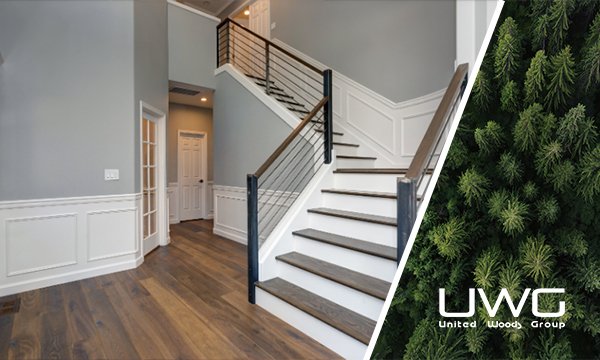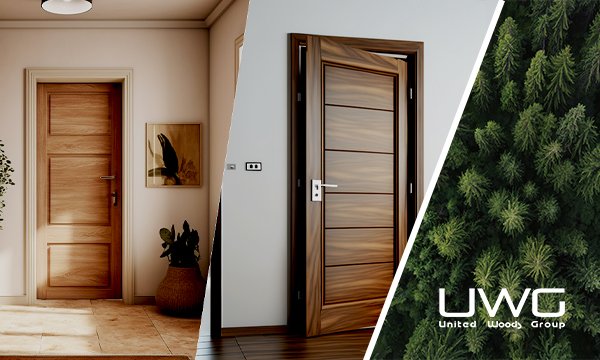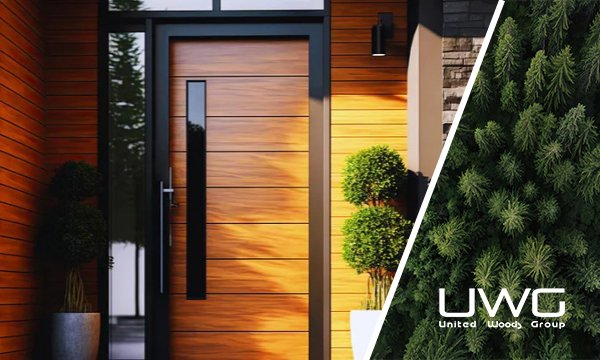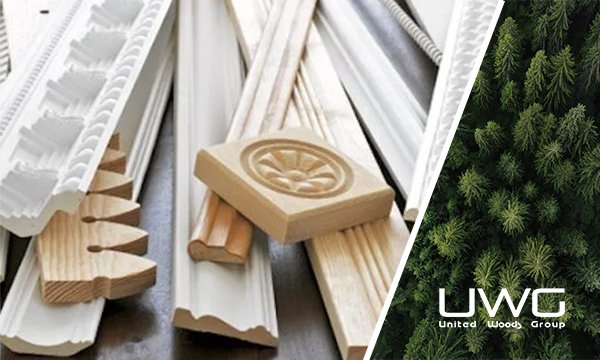When it comes to choosing the right doors for your project, understanding your options is crucial. One of the emerging choices in the market is the WPC door, a modern and versatile solution that combines the best of wood and plastic. These doors are becoming increasingly popular among wholesalers and building contractors due to their numerous advantages over traditional materials. In this article, we will delve into what WPC doors are, their benefits, types, pricing factors, and popular styles to help you make an informed decision.
WPC doors are made from a combination of wood powder and plastic. They have a similar appearance and texture to solid wood doors but offer superior waterproof, rot-resistant, and durable properties. This makes them an excellent choice for various applications, especially in areas prone to moisture.
Now that you know what a WPC door is, let’s explore its many benefits and how it stands up against other door types.

What are the advantages of WPC doors?
WPC doors have many advantages over traditional wooden and PVC doors. They are extremely durable, water-resistant, and require minimal maintenance. Unlike wood, WPC doors do not warp, crack, or split, making them ideal for areas with high humidity. They are also eco-friendly, as they are made from recycled materials.
One of the biggest advantages of WPC doors is that they are resistant to termites and other pests. Traditional wooden doors are susceptible to damage from insects, which can compromise their structural integrity over time. WPC doors eliminate this risk, providing a longer-lasting solution. Additionally, WPC doors are available in a variety of designs and finishes, allowing for greater customization to match different aesthetic preferences.
Another advantage is the ease of maintenance. WPC doors do not require regular painting or varnishing, unlike wooden doors. They can be easily cleaned with a damp cloth, making them a convenient option for busy environments. Moreover, WPC doors offer excellent thermal insulation, helping to maintain indoor temperatures and reduce energy costs.

Which is better, PVC or WPC?
When choosing between PVC and WPC doors, it is essential to consider the application. PVC doors are suitable for outdoor use as they are resistant to weathering. They are often used in areas exposed to rain, wind, and extreme temperatures as they do not corrode or degrade under such conditions. PVC doors are also lightweight, making them easy to install and handle.
However, if you want a more wood-like feel with added warmth for indoor use, WPC doors are the better choice. WPC doors combine the aesthetics of wood with the durability of plastic, making them a versatile option for various interior applications. They are more robust than PVC doors and offer better insulation properties, which can be beneficial in both residential and commercial settings.
Both materials are long-lasting, but WPC offers better insulation and aesthetic appeal. WPC doors can mimic the appearance of natural wood, providing a more premium look without the associated maintenance issues. This makes them suitable for upscale projects where aesthetics are crucial.
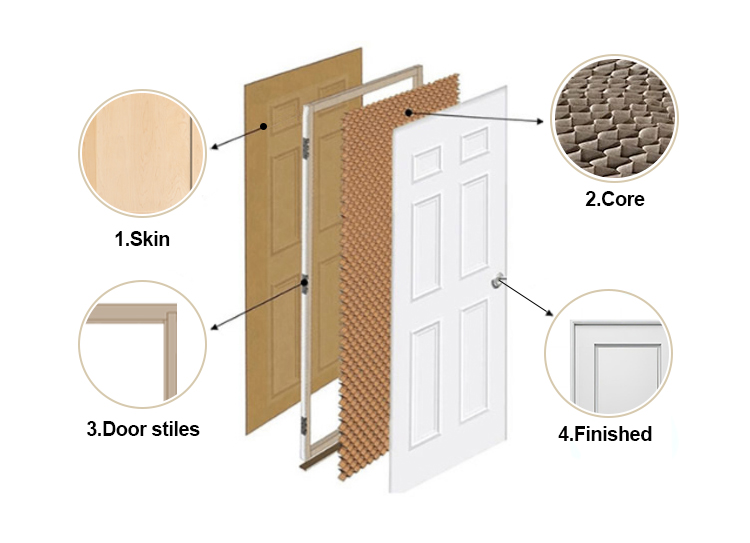
Is a WPC door better than a wooden door?
In many ways, WPC doors are as good as or better than traditional wooden doors. They are cheaper, more durable, and resistant to water and termites. While wooden doors provide a classic look, they require more maintenance and are prone to damage from environmental factors. Wooden doors can warp, crack, or swell due to changes in humidity and temperature, leading to costly repairs or replacements.
WPC doors provide the same visual appeal with added benefits and longevity. They retain their shape and integrity over time, even in challenging conditions. This makes them an excellent choice for high-traffic areas or locations where exposure to moisture is a concern, such as bathrooms and kitchens.
Furthermore, WPC doors are more environmentally friendly than wooden doors. The production of WPC doors uses recycled materials, reducing the demand for virgin wood and helping to conserve natural resources. This sustainable approach appeals to environmentally conscious consumers and builders looking to reduce their ecological footprint.


Which is cheaper, wood or WPC?
Wooden doors, especially those made from softwood, are generally seen as cheaper. However, considering the maintenance and replacement costs over time, WPC doors might be more economical in the long run. Softwood doors may have a lower initial cost, but their susceptibility to damage and the need for regular upkeep can lead to higher overall expenses.
Hardwood doors are even more expensive than WPC doors, making the latter a cost-effective alternative with similar aesthetic qualities. Hardwood doors offer durability and a premium look, but they come at a high price and require significant maintenance. WPC doors, on the other hand, provide a similar appearance and durability without the associated costs.
When evaluating the total cost of ownership, WPC doors often come out ahead. They require minimal maintenance, reducing the need for ongoing expenses. Additionally, their durability means they do not need to be replaced as frequently as wooden doors, leading to long-term savings.
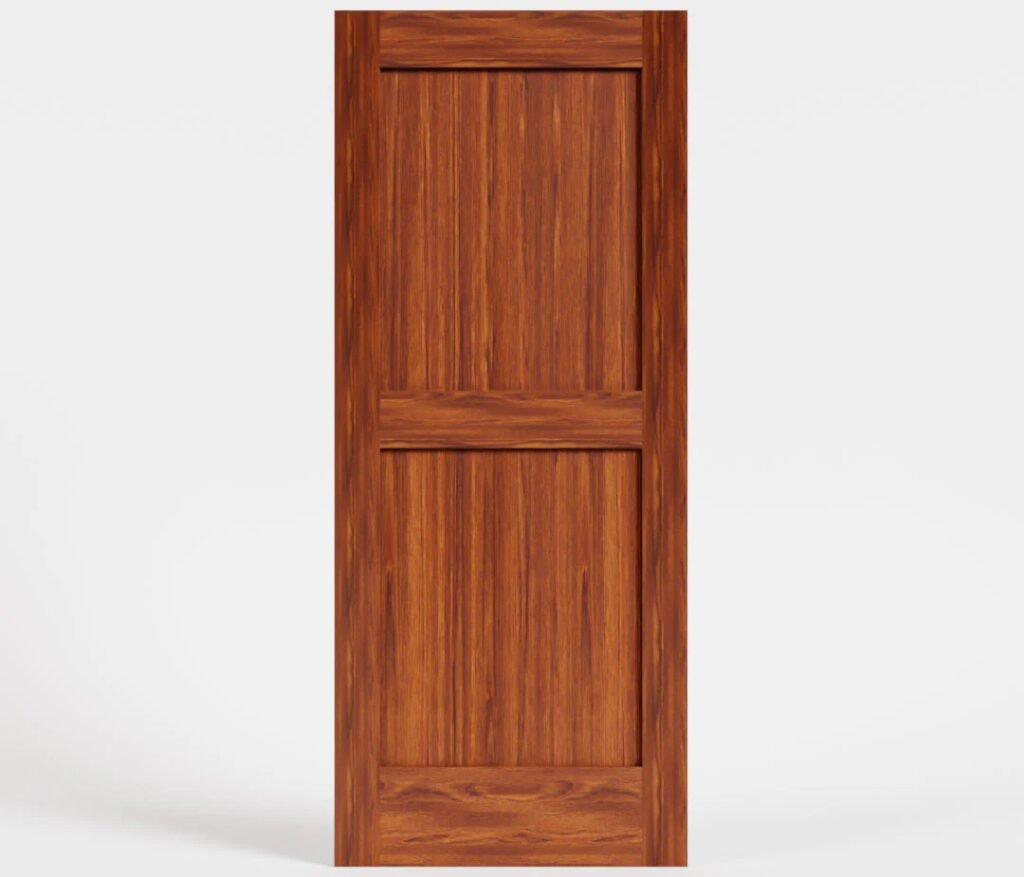

What is a WPC door used for?
WPC doors are versatile and can be used in various settings, including residential and commercial buildings. They are ideal for bathrooms, kitchens, and exterior doors where moisture resistance is crucial. Their durability also makes them suitable for high-traffic areas, such as schools, hospitals, and office buildings.
In residential applications, WPC doors are commonly used for bathroom and kitchen doors due to their resistance to moisture and ease of cleaning. They are also a popular choice for main entrance doors, providing a robust and attractive entryway. In commercial settings, WPC doors are used in offices, hotels, and retail spaces where durability and low maintenance are essential.
WPC doors are also favored in environmentally conscious projects. Their use of recycled materials and sustainable manufacturing processes make them an eco-friendly choice. Builders and architects looking to achieve green building certifications often opt for WPC doors to meet sustainability criteria.
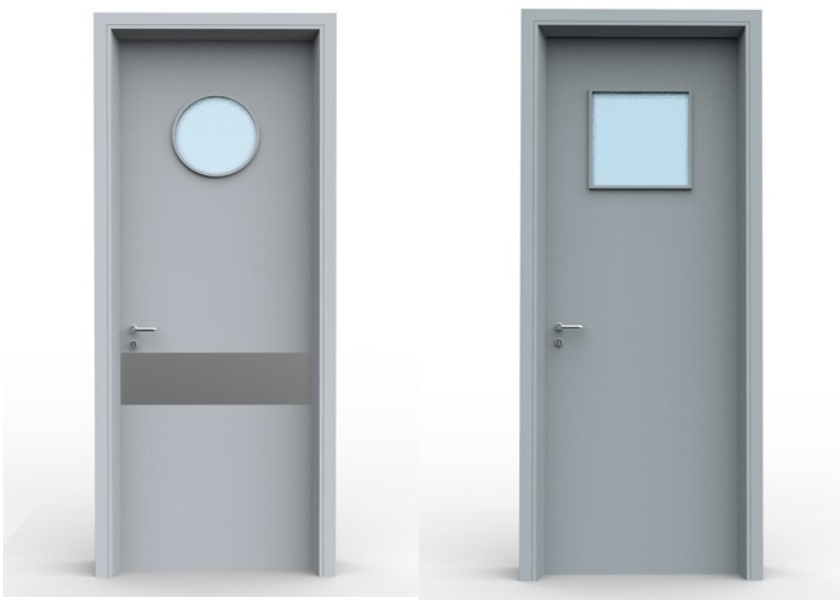
What is a WPC door frame?
A WPC door frame is made from the same wood-plastic composite material as WPC doors. These frames are strong, durable, and resistant to moisture and pests, making them an excellent complement to WPC doors. They ensure a cohesive look and provide additional structural integrity.
Using WPC door frames enhances the overall durability and performance of the door system. Traditional wooden frames can suffer from issues such as warping, swelling, and termite damage, which can affect the door’s functionality. WPC frames eliminate these problems, providing a stable and long-lasting solution.
Moreover, WPC door frames are available in various finishes and designs, allowing for seamless integration with the door and the surrounding decor. This ensures a uniform appearance and enhances the overall aesthetic of the space.


WPC Doors price
The price of WPC doors varies based on size, design, and quality. Generally, they are more affordable than hardwood doors but slightly more expensive than softwood doors. However, their long-term benefits and low maintenance costs make them a wise investment.
Factors affecting the price of WPC doors include the type of wood fibers used, the quality of the plastic, and the manufacturing process. Higher-quality WPC doors with intricate designs and finishes may cost more, but they offer superior performance and longevity.
When comparing prices, it’s essential to consider the total cost of ownership. WPC doors’ durability and low maintenance requirements can lead to significant savings over time. This makes them a cost-effective choice for both residential and commercial projects.

What is a WPC door made of?
WPC doors are made from a combination of wood powder or flour and plastic, which is mixed together and then extruded into a door shape. The result is a material that is strong when it comes to its ability to support weight, yet is lightweight. The WPC doors can be painted in a variety of colors, with the most popular being white. The manufacturing process allows for a variety of finishes, including those that resemble wood. The doors are made with a wood grain to give them a wood-like appearance but they can be painted in any color. The doors are made with a wood grain to give them a wood-like appearance but they can be painted in any color.


WPC Door design
WPC doors come in a wide range of designs and finishes. From traditional to modern styles, there is a WPC door to match any decors. They can be customized with different textures, colors, and patterns, providing a versatile solution for any design requirement.
Popular styles of WPC doors include panel doors, flush doors, and decorative doors. Panel doors feature raised or recessed panels that add depth and character to the design. Flush doors have a smooth, flat surface that offers a clean and contemporary look. Decorative doors may include intricate patterns, glass inserts, or other design elements to enhance their visual appeal.
The versatility of WPC doors allows them to be used in various settings, from residential homes to commercial buildings. Their ability to mimic the appearance of natural wood makes them a popular choice for projects where aesthetics are essential. Additionally, WPC doors can be painted or stained to match any color scheme, providing endless design possibilities.

WPC Doors for Bathroom
WPC doors are especially popular for bathroom use because of their water-resistant properties. They do not swell, warp, or get damaged from prolonged exposure to moisture, making them ideal for wet environments. Their durability also ensures they can withstand frequent use.
In addition to their practical benefits, WPC doors for bathrooms offer a variety of design options. They can be customized to match the overall décor of the bathroom, whether it’s a modern, minimalist style or a more traditional look. The ability to choose from different finishes and colors ensures that WPC doors can complement any bathroom design.
Moreover, the ease of maintenance makes WPC doors an excellent choice for bathrooms. They can be cleaned easily with a damp cloth, and their resistance to mold and mildew ensures they remain in good condition for years. This makes them a hygienic and low-maintenance option for both residential and commercial bathrooms.

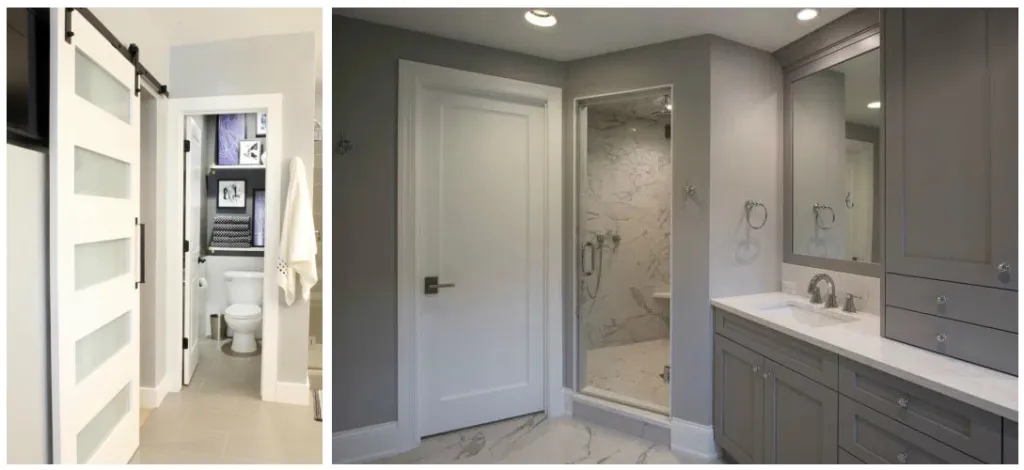
WPC doors disadvantages
WPC doors have some disadvantages. They can soften when exposed to very high temperatures and are not as well-known as other door types. Additionally, they may be more expensive upfront compared to some wooden doors, but their long-term benefits often outweigh this initial cost.
One of the main drawbacks of WPC doors is their performance in extreme heat. Prolonged exposure to high temperatures can cause the material to soften and potentially deform. This makes them less suitable for environments with consistently high temperatures or areas exposed to direct sunlight.
Another disadvantage is the perception of WPC doors in the market. As a relatively new material, WPC doors may not be as well-known or widely accepted as traditional wooden or PVC doors. This can make it challenging to find suppliers or contractors familiar with WPC doors, although their popularity is steadily increasing.
Finally, the initial cost of WPC doors can be higher than some wooden doors, particularly softwood options. However, when considering the long-term savings on maintenance and replacement costs, WPC doors often prove to be a more economical choice.

Summary
WPC doors offer a durable, eco-friendly, and aesthetically pleasing alternative to traditional wooden and PVC doors. Their resistance to moisture, pests, and environmental damage makes them an excellent choice for various applications. Whether for residential or commercial use, WPC doors provide a long-lasting and cost-effective solution. Consider WPC doors for your next project and enjoy the benefits they bring.
By choosing WPC doors, you invest in a product that combines the best qualities of wood and plastic, offering superior performance and longevity. Their versatility, low maintenance requirements, and environmental benefits make them an ideal choice for a wide range of projects. Explore the options available and see how WPC doors can enhance your building projects with their numerous advantages.



